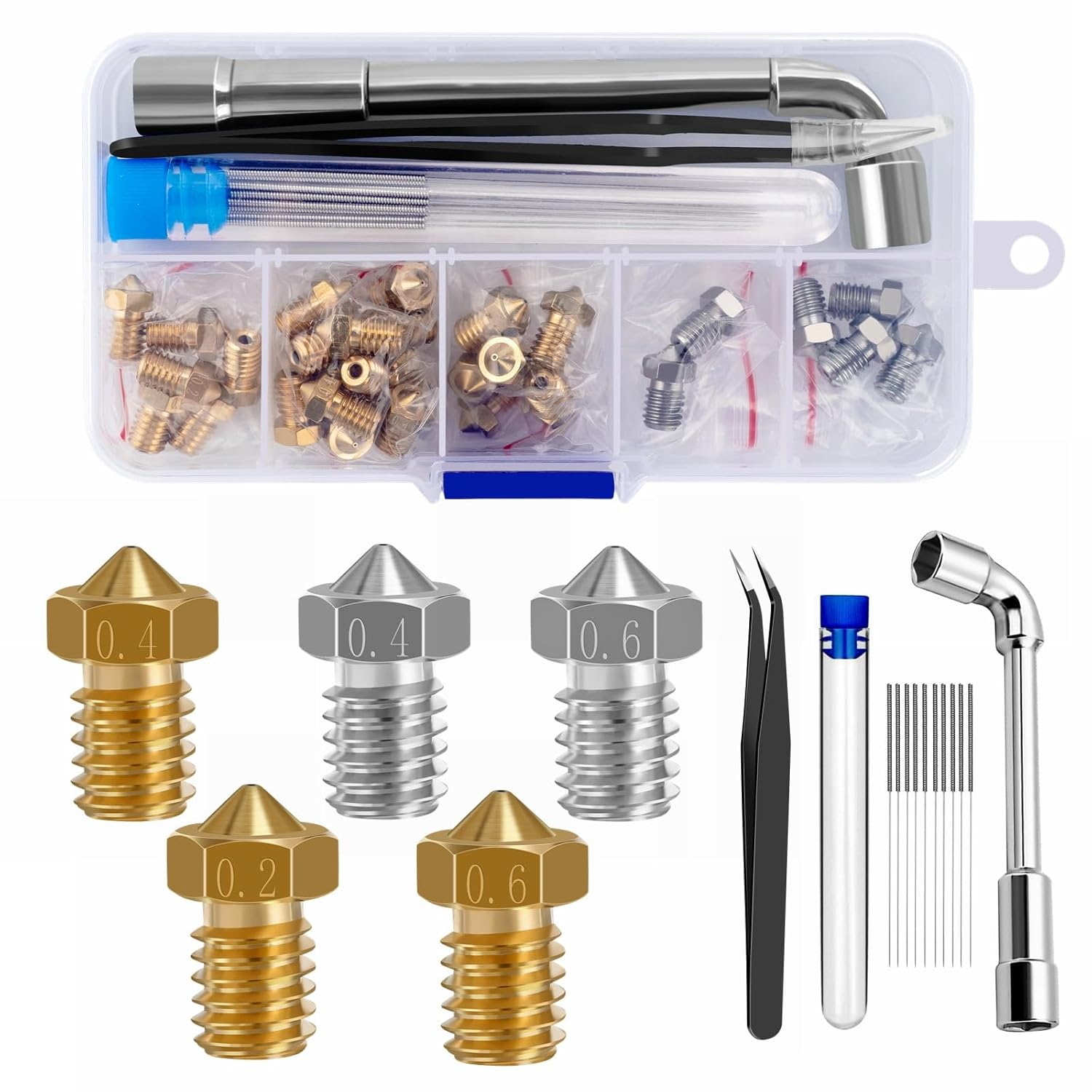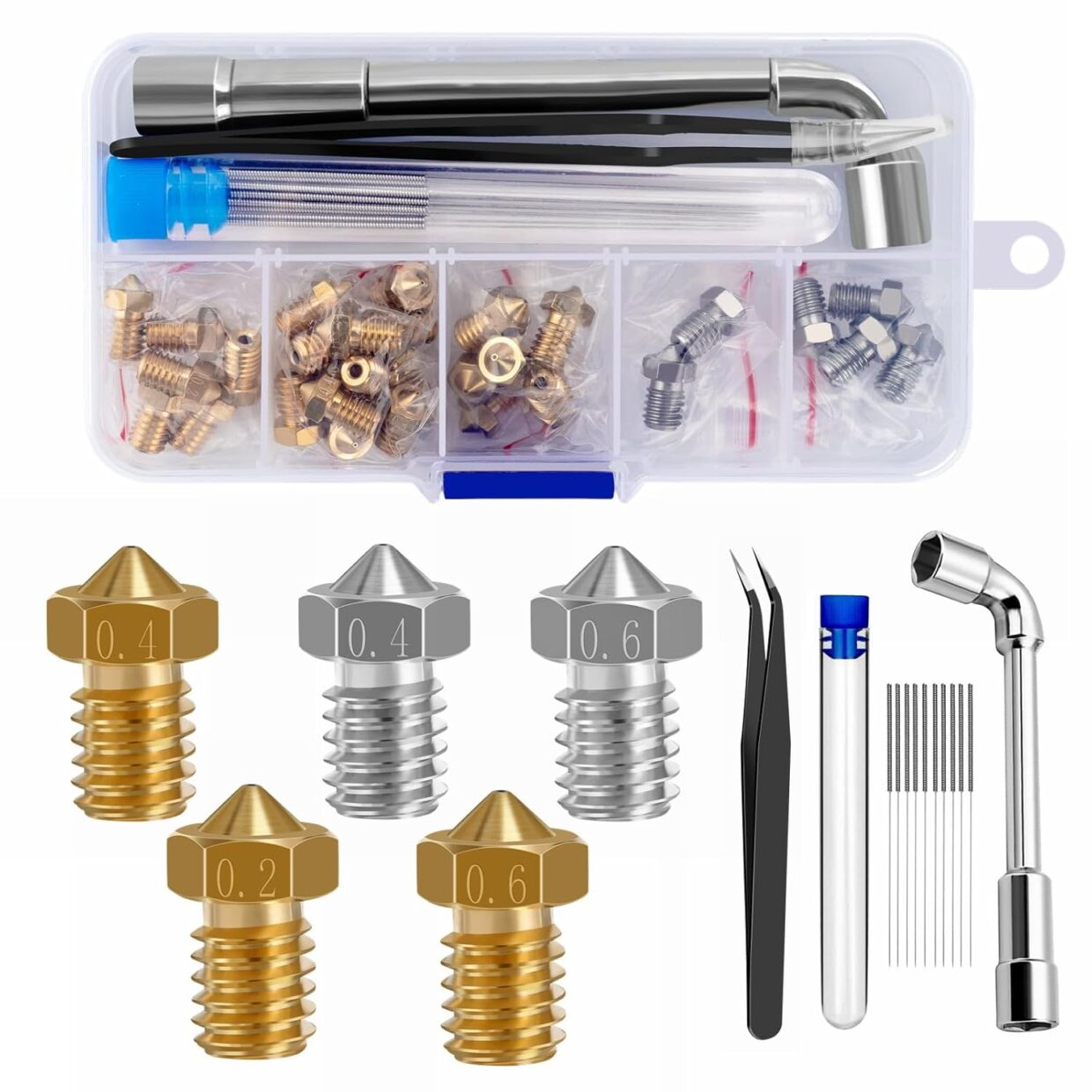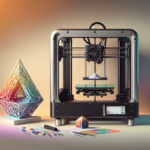
- arrow_back Home
- keyboard_arrow_right 3D Printing
Understanding the Nuances of 3D Printer Nozzle Sizes

3D Printing Chris Wyatt 26 October 2024
How often do you think about the role of your 3D printer nozzle size in the intricate dance of creativity and precision? The nozzle is a small yet significant component, ultimately shaping the outcome of your prints, influencing everything from layer adhesion to detail resolution. The world of 3D printing is rich with possibilities, but understanding the nuances of nozzle sizes can take your projects to a whole new level.
What is a 3D Printer Nozzle?
A 3D printer nozzle serves as the gateway through which molten filament makes its way onto the print bed. Generally constructed from brass, stainless steel, or even hardened steel, its primary purpose is to extrude the filament in a controlled manner. However, it’s not just a straightforward pipe; it’s a complex instrument that involves various dimensions, sizes, and concepts.
Key Components of a Nozzle
To understand nozzle sizes better, it’s crucial to grasp a few key components.
- Diameter: The diameter is the most defining characteristic. Common sizes include 0.2mm, 0.4mm, 0.6mm, and even 1.0mm.
- Shape and Design: Different nozzles may have variations in design, such as a conical or tapered end. The shape affects how filament flows, impacting print quality.
- Material: Different materials can withstand different temperatures and abrasiveness of filaments, affecting the longevity of the nozzle.
The diameter, in particular, dictates how much filament is extruded, making it a focal point in adjusting print quality and speed.
Why Nozzle Size Matters
You might ponder why nozzle size matters in the grand scheme of 3D printing. The answer is multifaceted, affecting your prints in ways you may not have considered.
Print Speed
Smaller nozzles allow for greater precision but may slow down print speed. With a 0.2mm nozzle, intricate designs come to life but require more time to fabricate. In contrast, using a 1.0mm nozzle speeds things up significantly for larger prints, but sacrifices detail.
Print Resolution
Resolution is where nozzle size truly shines. Smaller nozzles can handle more intricate designs, enabling finer details. Imagine printing a miniature sculpture; minimizing the nozzle size becomes paramount in rendering those delicate features.
Flow Rate and Material Compatibility
The flow rate is influenced by the size of the nozzle which, in turn, dictates material compatibility. Thicker filaments necessitate larger nozzles to allow for proper extrusion. Conversely, finer materials can only be used with smaller openings.

This image is property of images.unsplash.com.
Different Nozzle Sizes and Their Advantages
Understanding the various sizes available allows you to choose wisely based on your project requirements. Here’s a breakdown of common nozzle sizes and their unique benefits.
0.2mm Nozzle
- Advantages: This size excels in creating fine details and intricate patterns. Ideal for miniatures and parts requiring a high level of detail.
- Disadvantages: Slower print speeds and a higher chance of clogging, especially with thicker filaments.
0.4mm Nozzle
- Advantages: The industry-standard size that balances speed and detail. Suitable for most general-purpose prints, this size can handle a wide variety of filaments.
- Disadvantages: While it performs well for general use, it may not achieve the level of detail experienced with smaller nozzles.
0.6mm Nozzle
- Advantages: A great option for faster prints without compromising much on quality. It’s a versatile size for larger objects needing detail.
- Disadvantages: Not capable of achieving the same level of fine detailing as smaller nozzles.
1.0mm Nozzle
- Advantages: Excellent for rapid prototyping and larger prints. The increased flow rate can expedite the build process significantly.
- Disadvantages: You lose detail, making this size less viable for intricate designs.
Here’s a simple table summarizing the advantages and disadvantages of different nozzle sizes:
| Nozzle Size | Advantages | Disadvantages |
|---|---|---|
| 0.2mm | High detail, intricate patterns | Slower print speeds, risk of clogging |
| 0.4mm | Balanced, general-purpose usage | Lacks extreme level of detail |
| 0.6mm | Faster prints, good balance | Limited detail capabilities |
| 1.0mm | Rapid prototyping, efficient for larger prints | Sacrifices fine details |
Choosing the Right Nozzle Size for Your Project
Navigating this myriad of choices can feel overwhelming, but you’ve got the power to make informed decisions based on your project goals.
Project Type
Think about the type of project you’re embarking on. Are you crafting a miniature figurine or a robust tool? The nature of your project will drive your nozzle choice.
- Miniatures and Detail-Intensive Prints: Opt for smaller sizes (0.2mm to 0.4mm) to capture intricate patterns and details.
- Functional Parts: For practical applications like tool parts or prototypes that prioritize functionality over aesthetics, consider larger nozzles (0.6mm to 1.0mm).
Material Selection
Your choice of filament will also influence nozzle size selection. Thicker filaments, such as those designed for durability, will require a larger nozzle for optimal flow.
Layer Height Considerations
Layer height should be aligned with your nozzle size. A general rule of thumb is to set your layer height at about 75% to 100% of the nozzle diameter. For instance, if your nozzle is 0.4mm, a layer height of 0.3mm to 0.4mm is most suitable.

This image is property of images.unsplash.com.
The Technical Side: Nozzle Size and 3D Print Settings
Tuning your printer’s settings based on your selected nozzle size is essential for achieving optimal results.
Temperature Settings
Different nozzle sizes often require adjustments to the nozzle temperature settings. Larger nozzles may require higher temperatures to maintain proper flow, while smaller nozzles can operate effectively at lower temperatures.
Speed Settings
Speed settings will vary considerably based on your nozzle size. Smaller nozzles necessitate slower printing speeds to allow the fine details to emerge without issue, while larger nozzles can ramp up the speed significantly.
Retraction Settings
Retraction settings are crucial for preventing oozing or stringing, especially when using smaller nozzles. Experimenting with different settings will yield optimal results depending on your chosen size.
Experimenting and Finding Your Sweet Spot
Every maker knows that experimentation is key to honing your craft. The world of 3D printing is no exception.
Start Small
If you’re uncertain about which nozzle size to start with, you might want to begin with the standard 0.4mm. This size offers a reliable baseline that balances speed and detail, perfect for beginner to intermediate projects.
Conduct Test Prints
Performing test prints can clarify which nozzle size best suits your project needs. Create sample pieces using different sizes and evaluate the results critically. Consider aspects like print speed, detail, and surface finish.
Document Your Settings
Maintain a detailed log of the settings you use with different nozzle sizes. Having this reference point makes it much easier to adjust future projects based on previous experiences.

This image is property of images.unsplash.com.
Maintaining Your Nozzle
Taking care of your nozzle is essential to ensure long-term performance and reduce the need for frequent replacements.
Regular Cleaning
Over time, filaments can cause residue build-up, affecting performance. Regularly cleaning the nozzle with a soft brush or a cleaning filament can help maintain optimal flow.
Watch for Clogs
Clogs can happen with both small and large nozzles. Watch for slow extrusion or unusual noises, which might indicate a blockage. If you suspect a clog, carefully remove the nozzle for cleaning or replacement.
Replacement Considerations
Eventually, you may need to replace nozzles, especially with frequent use or when printing with abrasive materials. Consider the material and your frequency of use when selecting replacements.
Future Trends in Nozzle Technology
As 3D printing evolves, so does nozzle technology.
Innovations in Design
Recent advancements focus on improving flow rates while maintaining precision. Newer materials and designs may allow for even more versatility, catering to a broad spectrum of filaments.
Adaptive Nozzles
The future might hold adaptive nozzles that can change size or performance characteristics based on print requirements. Imagine switching from intricate details to speed without changing the component itself.
Conclusion
In the intricate world of 3D printing, nozzle size serves as a fundamental aspect that contributes significantly to your creative expression. Understanding the differences and how they affect your prints equips you with the knowledge to elevate your projects from the mundane to the extraordinary. Armed with this understanding, you have the opportunity to embrace the remarkable potential of 3D printing in your endeavors.
So, the next time you decide on a project, consider the size of your nozzle carefully. From experimenting with sizes to maintaining quality, you’re building a foundation for an engaging and fruitful creative journey. Aim high, take risks, and let your imagination run wild!
About Ultimate 3D
Learn everything there is to know about 3D Printers and the different components and printing materials.
Site Links
Copyright 2024 Ultimate 3D





Be the first to leave a comment